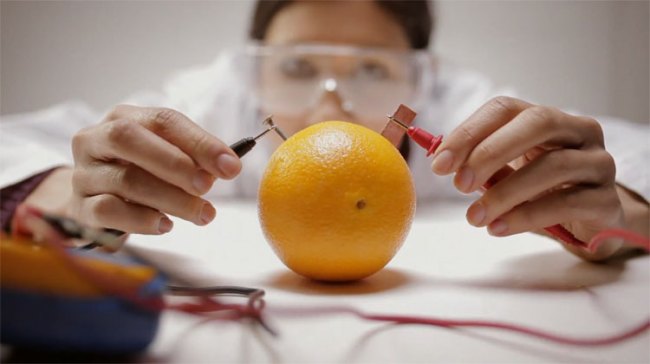
Forget solar, wind and clean burning coal; oranges are the future of fuel. Tropicana’s innovative new billboard ads in France are completely powered by oranges. They have taken the old science fair idea to a higher level. The simple layout of the billboard uses the oranges to power a sign reading “Energie Naturelle,” which means natural energy for those without Google translate.
The point of the ad is that the clean green energy provided by Tropicana oranges is the same energy it promises for your body. If it’s good enough for an LED sign, it’s good enough for you.
Relying on oranges to cure our present energy crises may not be an immediate solution, since it turns out this simple billboard came about through lots of hard labor. Thousands of zinc and copper barbs are used to produce electrolysis, and each orange provides 0.7 volts for the giant multi-cell battery. The installation uses 2,500 oranges to produce 1,800 volts to power the words of the billboard. Tropicana also says that the oranges were reused at the end to produce biogas or compost, as if this outdoor campaign wasn’t green enough.
The geniuses behind the French advertisement are the DDB advertising company in collaboration with the digital creative production company Unit9. Director Johnny Hardstaff of Unit9 has also made a catchy 90-second video to go along with the billboard, playfully detailing the three months of work it took to put together this advertisement. Green’s a great way to get attention and hopefully other companies take a cue from Tropicana’s outdoor ad in the heart of Paris.


